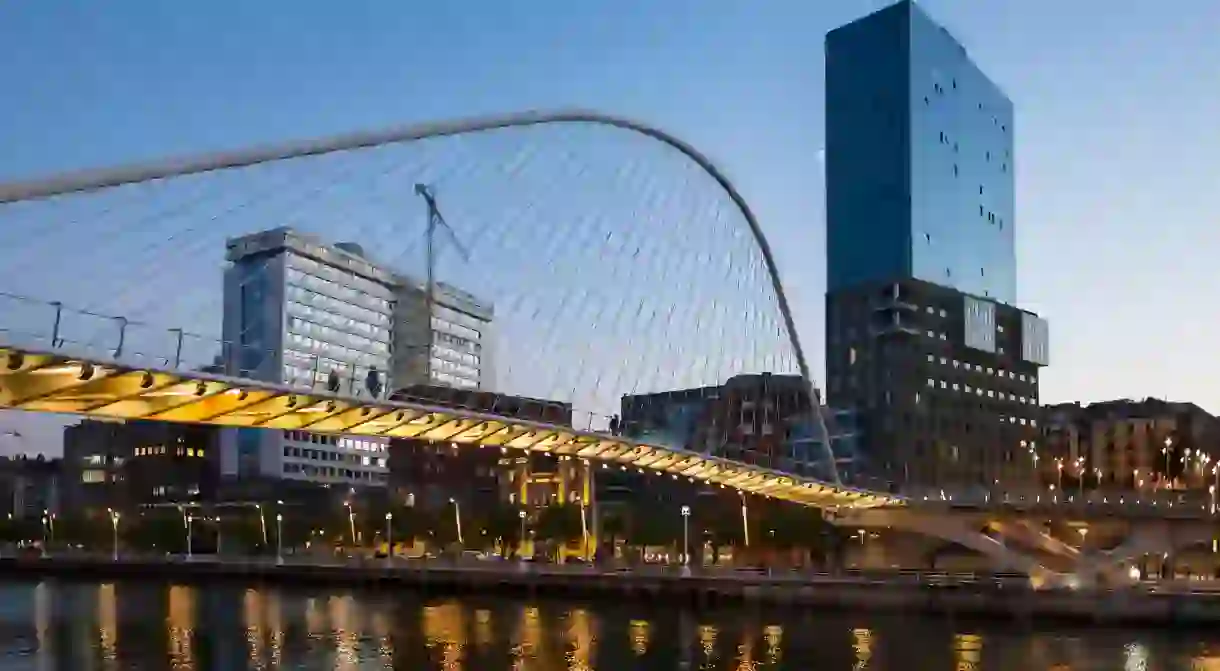Top Reasons Why You Should Visit Bilbao At Least Once in Your Lifetime

This once-gritty industrial powerhouse is now among northern Spain’s most stylish cities. Admire world-class art at the Guggenheim, learn about Basque culture in the Casco Viejo and top it off with pintxos at an old-school bar.
Bilbao is the biggest city – although not the capital – of Spain’s northerly Basque Country, a land with its own distinctive culture, traditions and even language. Here’s why we think everyone should visit Bilbao at least once, from contemporary and historic buildings to classic Basque snacks known as pintxos.
The Guggenheim Museum
Building, Museum

The unique Basque culture
Market, Historical Landmark

As the biggest city in the Basque Country, Bilbao is the perfect place to learn about the region’s culture. You’ll notice the language is different from the rest of Spain – here, they speak Euskera, a non-Latin language, also spoken in the Basque region of southern France. Additionally, they serve tapas-like snacks called pintxos in the bars. Visit in late August, when rural games, folk music and dancing occur as part of the Bilbao’s Aste Nagusia (Big Week) festival.
Pintxos, the Basque version of tapas
Bar, Spanish

In most of Bilbao’s bars, counter-top cabinets showcase colourful arrays of pintxos, a type of snack that you won’t find in any other region of Spain. They consist of slices of bread, often topped with goodies such as cured ham and goats’ cheese, roasted red peppers, tortilla or angulas (young eels) – but the range of edible adornments is basically unlimited and varies from bar to bar. Another classic Basque snack is the gilda, a spicy skewer of pickled green pepper, anchovy and olives.
The contemporary architecture
Bridge, Architectural Landmark

Daring architectural innovation led Bilbao’s 20th-century transformation from industrial centre to design-conscious, modern city. Key contemporary structures to include on a self-guided tour include the glass-bottomed, sail-shaped Zubizuri Bridge (1997), by Valencian architect Santiago Calatrava; Frank Gehry’s titanium-clad Guggenheim Museum (also 1997); the Gaudí-esque Casa Montero (1904) and the boxy glass-and-steel facade of the Basque Health Department, found on the Alameda de Recalde.
Europe’s largest indoor food market
Market, Restaurant, Spanish

The region’s seafood
Restaurant, Bar, Seafood
Apart from San Sebastián, Bilbao is the best city in the Basque Country in which to eat fish and seafood. Several of the region’s most typical dishes focus on cod, with bacalao al pil pil (crispy cod in a garlic sauce) and bacalao a la Vizcaina (cod in tomato sauce) being two of the most common. For an appetiser, go for a plate of goose barnacles (percebes) and a glass of Txakoli, a slightly sparkling, dry Basque white wine. There are plenty of excellent local restaurants to try here.
The Casco Viejo
Architectural Landmark, Historical Landmark

Also known as Las Siete Calles after its seven main streets, Bilbao’s Casco Viejo, or Old Town, was bounded by defensive walls until the 19th century. Almost entirely consisting of pedestrianised, cobbled streets connected by alleyways called cantons, this medieval quarter is home to some of the city’s most important buildings: don’t miss the 15th-century Santiago Cathedral (named after pilgrims taking the northern version of the Camino de Santiago), the Baroque Santos Juanes church or the elegant main square, Plaza Nueva.
The nearby natural parks
Forest, Natural Feature, Park

Bilbao is an ideal destination if you fancy hiking as well as sightseeing – it’s within easy driving distance of two trail-crossed natural parks. A short 40km (25mi) to the east of the city is the Unesco-protected Urdaibai Biosphere Reserve, where trekking and cycling tracks snake through the Basque Country’s biggest expanse of wetlands. Alternatively, drive 30 minutes south of Bilbao to the Gorbeia Natural Park and hike to the top of the 1,481m (4,859ft) Mount Gorbeia (the trail starts at the Pagomakurre recreational area).
This is an updated version of an article originally by Esme Fox.













